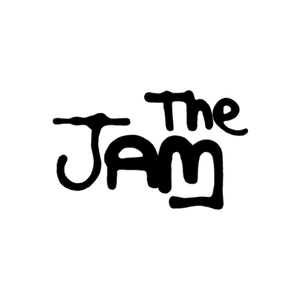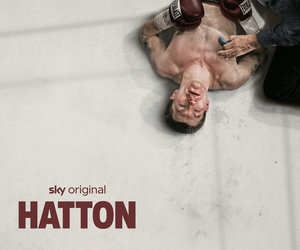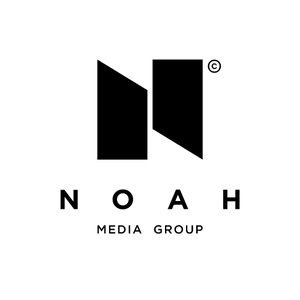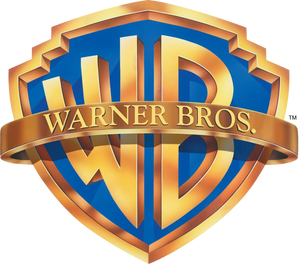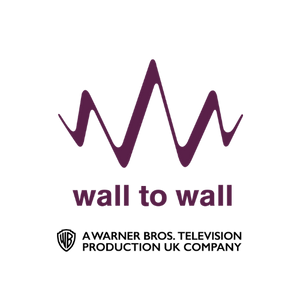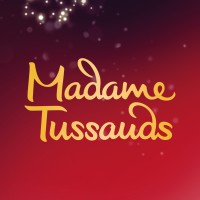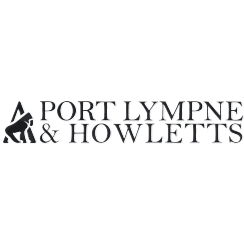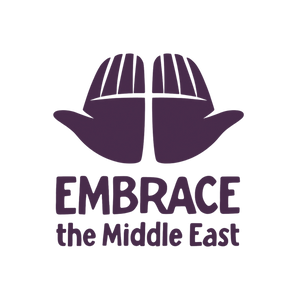Convert Glass Negatives to Digital
Unlock the hidden stories within your glass negatives and safeguard your photographic heritage for future generations. EachMoment's specialist service expertly converts fragile glass negatives into high-resolution digital formats. Start your preservation journey with just a £10 deposit to receive your complimentary, secure Memory Box. We offer meticulous handling, advanced scanning technology, and free cloud storage, ensuring your irreplaceable images are preserved and easily shared. Rediscover your past on USB, DVD, or your private Cloud Album.
- Complimentary delicate cleaning of glass negatives included as standard
- High-resolution digitisation using specialised flatbed scanners for optimal detail capture
- Free Cloud Album provided for convenient sharing and lifetime access
- Trusted throughout the UK by families and archives for secure and sensitive handling
- Over 600+ 5-star testimonials from delighted customers
Order before midday for Memory Box next-day delivery. Free secure 3-way courier & Memory Box for orders over £50.00
Memories we've restored & preserved
3 Easy Steps To Preserve Your Precious Memories
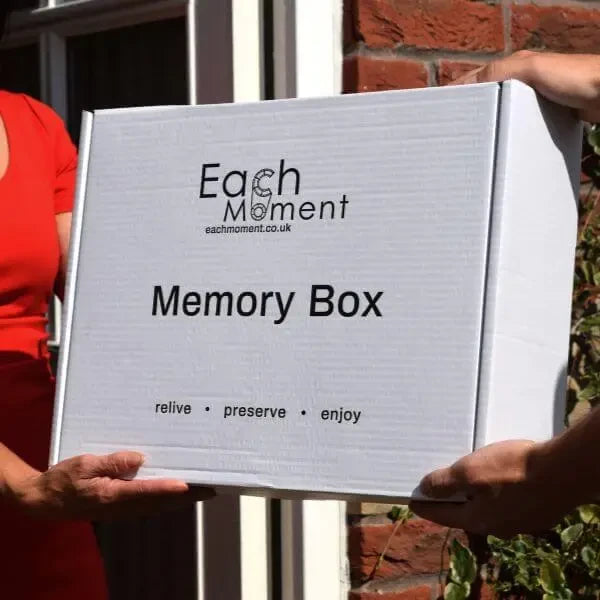
1. Order Your Free Memory Box – Get Started with a £10 Deposit
Begin the journey of preserving your historical photographs by ordering your complimentary, robust Memory Box today. A small £10 deposit is all it takes to initiate the process. Place your order before 12 pm, and we will dispatch your Memory Box for next-day delivery, prepared for you to carefully pack your glass negatives. Rest assured, our expert technicians will handle any necessary gentle cleaning. Once your Memory Box is filled with your glass plates, simply arrange a complimentary, secure courier collection through our user-friendly online platform.
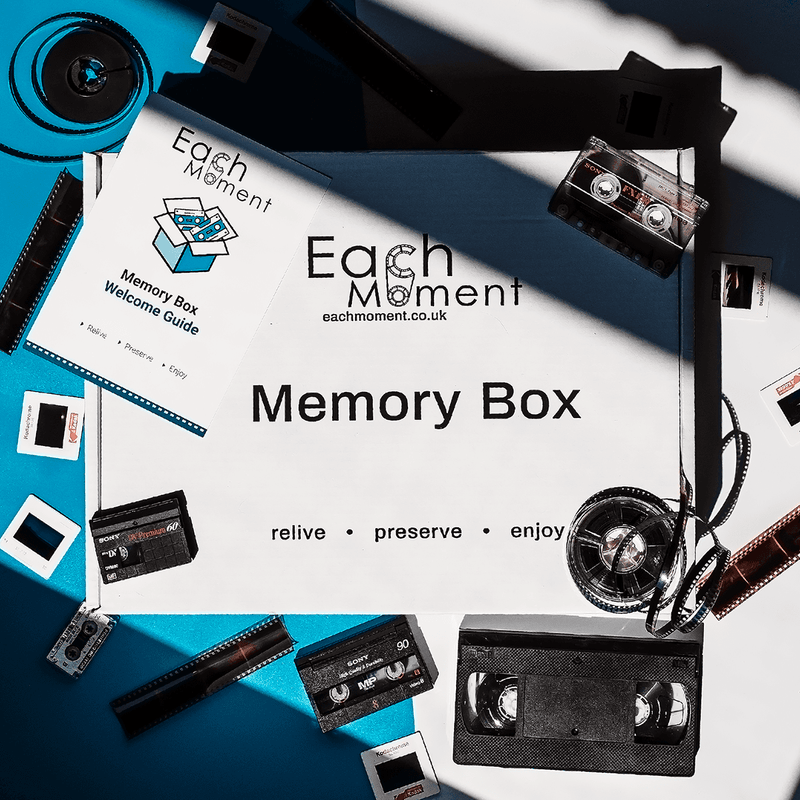
2. Expert Glass Negative Digitisation with Preservation-Grade Care
Upon arrival at our specialist UK digitisation lab, your glass negatives are treated with the utmost care and respect. Each plate undergoes a meticulous process of gentle cleaning, careful handling, and high-resolution scanning using specialised flatbed scanners designed for delicate media. Our skilled technicians expertly convert your glass negatives to digital images, optimising clarity and detail for modern viewing. From initial dust removal to negative-to-positive conversion, these essential steps are included at no extra cost, ensuring the highest quality digital reproduction of your precious historical photographs.
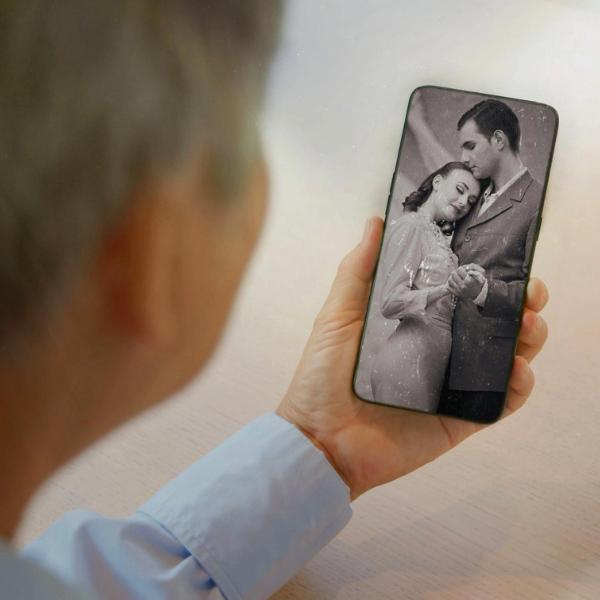
3. Access, Relive, and Share Your Digitised Glass Plate Images
Rediscover the beauty and detail of your glass negative photographs, now in a vibrant digital format. We return your original glass plates along with your newly digitised images in your chosen format – convenient USB drive, classic DVD, or easily accessible cloud storage. Effortlessly share these irreplaceable glimpses into the past with family and researchers, near and far, across generations, knowing your visual history is securely preserved for the future. Enjoy simple viewing on modern devices including Smart TVs, computers, tablets, and smartphones.

1. Order Your Free Memory Box – Get Started with a £10 Deposit
Begin the journey of preserving your historical photographs by ordering your complimentary, robust Memory Box today. A small £10 deposit is all it takes to initiate the process. Place your order before 12 pm, and we will dispatch your Memory Box for next-day delivery, prepared for you to carefully pack your glass negatives. Rest assured, our expert technicians will handle any necessary gentle cleaning. Once your Memory Box is filled with your glass plates, simply arrange a complimentary, secure courier collection through our user-friendly online platform.

2. Expert Glass Negative Digitisation with Preservation-Grade Care
Upon arrival at our specialist UK digitisation lab, your glass negatives are treated with the utmost care and respect. Each plate undergoes a meticulous process of gentle cleaning, careful handling, and high-resolution scanning using specialised flatbed scanners designed for delicate media. Our skilled technicians expertly convert your glass negatives to digital images, optimising clarity and detail for modern viewing. From initial dust removal to negative-to-positive conversion, these essential steps are included at no extra cost, ensuring the highest quality digital reproduction of your precious historical photographs.

3. Access, Relive, and Share Your Digitised Glass Plate Images
Rediscover the beauty and detail of your glass negative photographs, now in a vibrant digital format. We return your original glass plates along with your newly digitised images in your chosen format – convenient USB drive, classic DVD, or easily accessible cloud storage. Effortlessly share these irreplaceable glimpses into the past with family and researchers, near and far, across generations, knowing your visual history is securely preserved for the future. Enjoy simple viewing on modern devices including Smart TVs, computers, tablets, and smartphones.

Excellent
4.7/ 5
reviews
Long lost treasures
EachMoment haven't just 'unlocked' the memories on the tape, they've also cleaned up the sound and picture, boosted the volume and the running speed is now correct. It's like stepping back in time, our dearly departed parents and other relatives - then so young - each having a turn at talking, singing at the camera. It sends warm shivers down the spine! I can't recommend highly enough. EachMoment haven't just 'unlocked' the memories on the tape, they've also cleaned up the sound and picture, boosted the volume and the running speed is now correct. It's like stepping... EachMoment haven't just 'unlocked' the memories on the tape, they've also cleaned up the sound and picture, boosted the volume and the running speed is now correct. It's like stepping back in time, our dearly departed parents and other relatives - then so young - each having a turn at talking, singing at the camera. It sends warm shivers down the spine! I can't recommend highly enough.
Catherine, 6 hours ago
After trying to remember lost loved ones
After trying to remember lost loved ones voices, we found old video tapes and after searching the internet for a company to try and digitalise them we came across each moment. They managed to clean and restore and put them all on a memory stick that we can watch for ever now! I’ve loved watching them, absolutely fantastic so would highly recommended this company. After trying to remember lost loved ones voices, we found old video tapes and after searching the internet for a company to try and digitalise them we came across each... After trying to remember lost loved ones voices, we found old video tapes and after searching the internet for a company to try and digitalise them we came across each moment. They managed to clean and restore and put them all on a memory stick that we can watch for ever now! I’ve loved watching them, absolutely fantastic so would highly recommended this company.
Kelly M, 22 hours ago
Last night I heard my grandmother's…
Last night I heard my grandmother's voice reading a Christmas poem for the first time in over 30 years. She passed away in 1990, and after her death I found a cassette tape, mangled in a tape player. I kept it, hoping one day to find a way to restore it. EachMoment restored that tape, and this year on the day of her birthday, her great-grandchildren will hear her voice for the first time, and her children, now grandparents themselves, will hear their mother's voice again as well. There are no words that can adequately express my gratitude. Last night I heard my grandmother's voice reading a Christmas poem for the first time in over 30 years. She passed away in 1990, and after her death I found... Last night I heard my grandmother's voice reading a Christmas poem for the first time in over 30 years. She passed away in 1990, and after her death I found a cassette tape, mangled in a tape player. I kept it, hoping one day to find a way to restore it. EachMoment restored that tape, and this year on the day of her birthday, her great-grandchildren will hear her voice for the first time, and her children, now grandparents themselves, will hear their mother's voice again as well. There are no words that can adequately express my gratitude.
Laura P, yesterday
EachMoment rescued 30 Hi8 analogue…
EachMoment rescued 30 Hi8 analogue camcorder tapes. 45 hours of family memories. I could not plly them on my camcorder and thought I had lost them forever. Some of the tapes are over 30yrs old.The technical department has managed to extract restore and digitise nearly everything!Now all those memories are available to the whole family to share on whatsapp and stream on our TV whenever they come round! Love it. EachMoment rescued 30 Hi8 analogue camcorder tapes. 45 hours of family memories. I could not plly them on my camcorder and thought I had lost them forever. Some of the... EachMoment rescued 30 Hi8 analogue camcorder tapes. 45 hours of family memories. I could not plly them on my camcorder and thought I had lost them forever. Some of the tapes are over 30yrs old.The technical department has managed to extract restore and digitise nearly everything!Now all those memories are available to the whole family to share on whatsapp and stream on our TV whenever they come round! Love it.
Kevin N, yesterday
Long ago cherished memories
The items we sent to be converted from VHS tapes to DVD's, an Audio tape cassette to CD and negatives and slides to a memory stick were excellently done. Everyone who has seen and heard the finished articles has been very impressed. Excellent value for money and has been recommended several times. The items we sent to be converted from VHS tapes to DVD's, an Audio tape cassette to CD and negatives and slides to a memory stick were excellently done. Everyone... The items we sent to be converted from VHS tapes to DVD's, an Audio tape cassette to CD and negatives and slides to a memory stick were excellently done. Everyone who has seen and heard the finished articles has been very impressed. Excellent value for money and has been recommended several times.
Theresa, 2 days ago
Excellent service
It is very easy to place an order as everything is organised by EachMoment. I ordered the digitisation of a large quantity of old Super 8 Cine film, Video 8 tapes, VHS tapes and photographic negatives. The process took about 3 weeks due to the quantity but it was well worth waiting for. I was absolutely delighted by the results and I feel reconnected with my past and people who were in my life as far back as the early 1950s. Incredible ! It is very easy to place an order as everything is organised by EachMoment. I ordered the digitisation of a large quantity of old Super 8 Cine film, Video 8... It is very easy to place an order as everything is organised by EachMoment. I ordered the digitisation of a large quantity of old Super 8 Cine film, Video 8 tapes, VHS tapes and photographic negatives. The process took about 3 weeks due to the quantity but it was well worth waiting for. I was absolutely delighted by the results and I feel reconnected with my past and people who were in my life as far back as the early 1950s. Incredible !
Mauro S H, 2 days ago
Excellent.
I sent in a large number of old slides and video tapes to be digitised some of which were in very poor condition. Each Moment did a fantastic job of capturing the images digitally for me. Professional service, friendly helpful staff. Will be using again and would recommend. I sent in a large number of old slides and video tapes to be digitised some of which were in very poor condition. Each Moment did a fantastic job of... I sent in a large number of old slides and video tapes to be digitised some of which were in very poor condition. Each Moment did a fantastic job of capturing the images digitally for me. Professional service, friendly helpful staff. Will be using again and would recommend.
Marcus H, 3 days ago
Wonderful service and wonderful results
I bought a mixed box of old tapes and cassettes, some in poor condition and the team at Each Moment worked their magic.I now have many happy memories that would otherwise have been lost.They are a brilliant company, professional and efficient and I wouldn’t hesitate to recommend them, or urge others to salvage memories before their lost! I bought a mixed box of old tapes and cassettes, some in poor condition and the team at Each Moment worked their magic.I now have many happy memories that would... I bought a mixed box of old tapes and cassettes, some in poor condition and the team at Each Moment worked their magic.I now have many happy memories that would otherwise have been lost.They are a brilliant company, professional and efficient and I wouldn’t hesitate to recommend them, or urge others to salvage memories before their lost!
Amanda, 3 days ago
A lot of videocam footage transferred quickly.
I needed to get a lot of videocam cassette footage transferred as a surprise for a 70th birthday at relatively short notice. The team were very helpful when approached and were able to get me online access to the 39 tapes before I received the USBs so I could select specific videos for the party. One tape was also returned and cleaned up very quickly when it was found to have some tracking interference. We now have some great memories restored to share with the family and our grandchildren. I needed to get a lot of videocam cassette footage transferred as a surprise for a 70th birthday at relatively short notice. The team were very helpful when approached and... I needed to get a lot of videocam cassette footage transferred as a surprise for a 70th birthday at relatively short notice. The team were very helpful when approached and were able to get me online access to the 39 tapes before I received the USBs so I could select specific videos for the party. One tape was also returned and cleaned up very quickly when it was found to have some tracking interference. We now have some great memories restored to share with the family and our grandchildren.
Mark F, 3 days ago
Ready to Digitise Your Glass Negatives and Protect Your Legacy?
Don't risk losing your irreplaceable glass negative photographs to damage, degradation, or the passage of time. Our professional glass negative digitisation service provides a straightforward, secure, and high-quality solution to safeguard your precious visual heritage. Order your free Memory Box today for just a £10 deposit and take the first step towards preserving your family or institutional history for generations to come.
Order your protective Memory Box before midday, and we guarantee same-day dispatch for next working day delivery, enabling you to promptly and securely send us your cherished glass negatives.

Enhance the organisation of your digital archive! Provide us with details about your glass negatives, and we will create custom filenames for your digital images, making it easy to locate and share specific photographs with family, friends, or researchers.

Your Memory Box includes a pre-paid return shipping label and protective packaging, ensuring the safe and fully tracked transit of your original glass negatives and your new digital media back to your doorstep via our reliable courier partner.

Stay informed at every stage with our real-time online order tracking system. Monitor your Memory Box's journey from collection, throughout the digitisation process in our lab, to its secure return delivery to you.

We go beyond simple scanning. Our service includes gentle cleaning and meticulous handling of your glass negatives, ensuring their safety throughout the process and enhancing image quality for optimal digital results, all at no additional cost to you.

We are confident you will be delighted with your newly digitised glass negative images. We guarantee the quality of our service and offer a full refund if you are not completely satisfied. Your peace of mind and treasured photographs are our highest priority.
Free Secure Collection & Return | Professional Glass Negative Handling | Free Personalised File Names | Free Cloud Storage
“The quality of the videos and audio was incredible. I would 100% recommend EachMoment to anyone!” — Abby
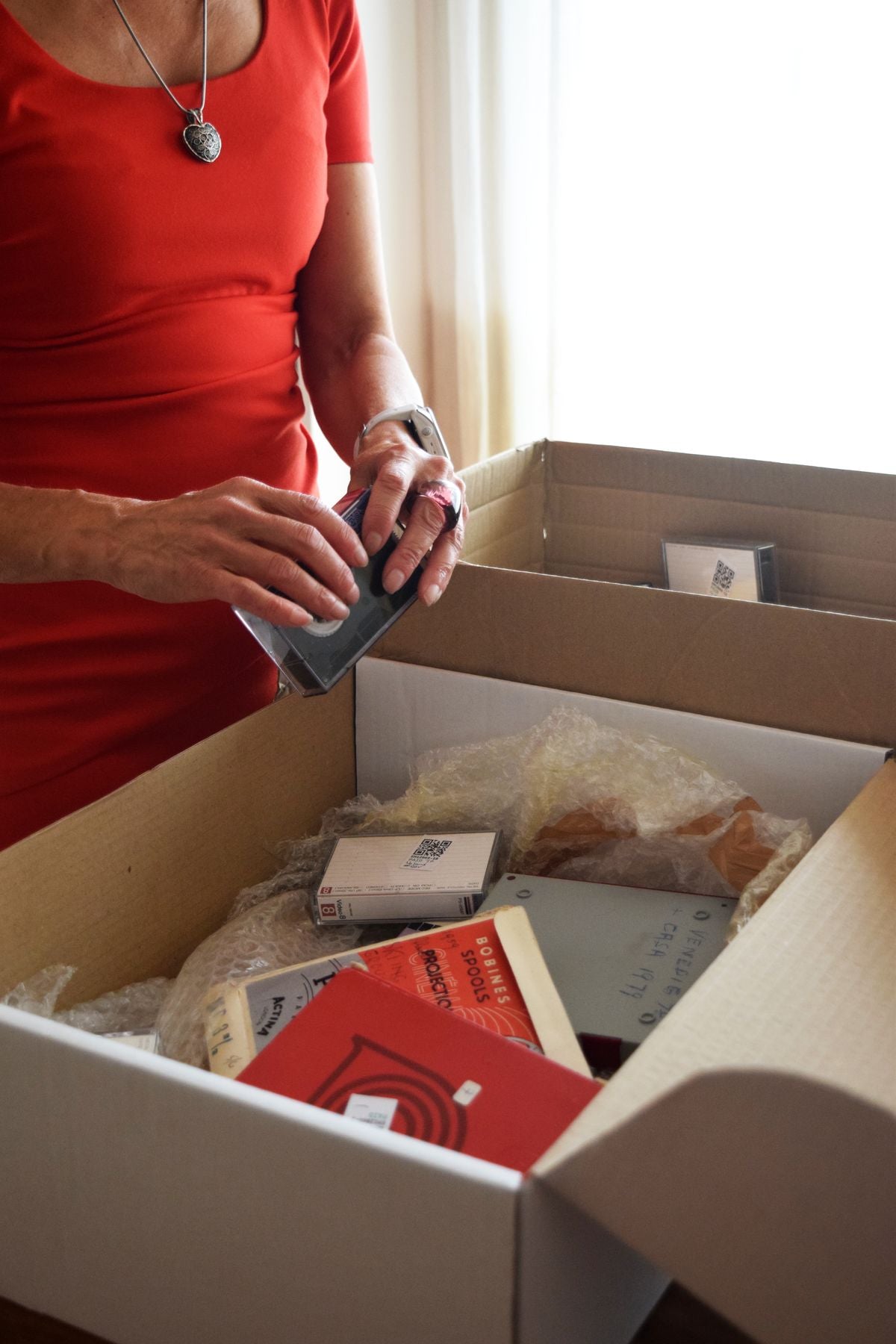
Why a Protective Memory Box is Crucial for Your Fragile Glass Negatives
Our Memory Box is more than just packaging; it is the safest passage for your glass negatives to digital preservation. Specifically designed to protect delicate media, this robust, crush-proof box ensures your fragile plates arrive at our lab in perfect condition. Order before midday, and your Memory Box, complete with an easy-to-follow Welcome Guide, will be delivered the next working day. Simply pack your glass negatives – regardless of their age or condition – and entrust our specialists to carefully digitise them. We have invested significantly in perfecting the secure handling of fragile photographic materials, partnering with the same trusted couriers used for transporting sensitive official documents. Our proven history speaks for itself: zero glass negatives lost or damaged in transit, ever. Your irreplaceable historical images deserve nothing less than this dedicated level of protection, from initial collection to expert digitisation and safe return.
Your Cherished Glass Negative Photographs, Securely Preserved for Posterity
-
- Professional digitisation halts the ongoing degradation of glass negative emulsions, preventing further loss of image detail and clarity.
- Digital conversion future-proofs your historical photographs, ensuring enduring compatibility with modern technology for generations to come.
- We utilise a high-security courier service, the same service trusted for transporting university examination papers and passports, providing ultimate peace of mind.
- Our experienced in-house team employs a meticulous tracking system, carefully monitoring each individual glass negative throughout the entire digitisation process.
- Easily track your Memory Box's journey from your doorstep to our specialist lab via your smartphone, computer, or by contacting our dedicated phone support.
- Your valuable glass negatives are transported in our robust, crush-resistant Memory Box, custom-engineered for maximum protection against physical damage.
Preservation-Grade Glass Negative Digitisation & Meticulous Handling
With deep expertise in heritage media conversion, EachMoment delivers industry-leading glass negative digitisation services. Our dedicated, UK-based lab is equipped with specialised, regularly calibrated flatbed scanners and preservation-grade equipment, ensuring the highest standard of digital transfer for your historical photographs and irreplaceable images.
Each glass negative undergoes a comprehensive process of careful handling and gentle cleaning before digitisation commences. By meticulously removing surface dust and contaminants with specialist tools, we enhance the integrity of the photographic emulsion and ensure optimal image capture, a vital step often overlooked by other services, which can compromise the final digital quality. We invest the extra time and meticulous care to ensure your historical photographs are preserved at their absolute best possible quality.
Professional cleaning and meticulous handling are included as standard with every glass negative to digital conversion order.
Frequently Asked Questions About Glass Negative to Digital Conversion Services
Could you outline the complete process for digitising glass negatives at EachMoment?
A: Preserving your glass negatives with EachMoment is a straightforward, secure, and carefully managed process:
1. Order & Receive Your Memory Box: Use our simple online quote tool, select 'Glass Negatives', and pay just a £10 deposit to begin. Your free, reinforced Memory Box is promptly dispatched for next-day delivery.
2. Carefully Pack Your Glass Negatives: Securely pack your glass plates into the Memory Box, utilising the protective materials provided. No need to pre-clean your plates; our experts will handle that with specialist tools!
3. Arrange Secure Courier Collection: Schedule a free, secure courier collection easily via our online portal. Your Memory Box is then safely transported to our specialist UK lab.
4. Glass Plate Assessment & Invoice (or Refund): Upon arrival at our lab, our expert technicians carefully assess your glass negatives and issue a clear online invoice for any adjustments or a refund if applicable.
5. Preservation-Grade Digitisation & Handling: Following secure payment, your glass negatives undergo gentle cleaning, meticulous handling, and high-resolution digitisation using specialised flatbed scanners and techniques.
6. Rigorous Quality Control & Digital Preparation: Your newly digitised images undergo stringent quality checks and are meticulously prepared for your chosen output format (Cloud Album, USB drive, or DVD).
7. Secure Return of Originals & Digital Copies: Your original glass negatives and your digital copies are securely returned to you via our trusted courier service.
8. Relive & Share Your Visual History: Enjoy and easily share your revitalised historical photographs on any digital device!
Order before 12 pm for next-day Memory Box delivery. Free Memory Box + free 3-way secure courier for orders over £50.00.
Which sizes and types of glass negatives can EachMoment digitise?
A: We are equipped to digitise a comprehensive range of glass negative sizes and types, including:
Standard Sizes: We routinely handle common glass plate sizes such as quarter plate (3.25 x 4.25 inches), half plate (4.75 x 6.5 inches), whole plate (6.5 x 8.5 inches), and stereoscopic plates.
* Large Format Negatives: We can also digitise larger format glass negatives, including those up to 10x12 inches and beyond. Please contact us for a custom quote for oversized plates.
* Various Glass Types: We handle various glass substrates, including clear glass, tinted glass, and those with minor imperfections or variations in thickness. We are experienced in digitising both 'wet plate collodion' and 'dry plate' glass negatives.
* Lantern Slides: We can also digitise glass lantern slides, which are positive images on glass, often used for projection.
If you have particularly unusual or oversized glass negatives, please contact us, and our specialists will be happy to discuss your specific requirements and ensure we can accommodate your valuable historical collection.
What if I have more glass negatives than initially estimated when placing my order?
A: Discovering more glass negatives than initially anticipated is a common occurrence with historical collections! Our streamlined process is designed to be flexible and easily accommodate this situation:
1. Provide an Initial Estimate & Start: Use our user-friendly online quote tool to provide your best estimate of the number of glass negatives you have and pay the £10 deposit to receive your free Memory Box.
2. Pack All Your Glass Negatives: When your Memory Box arrives, simply pack all of your glass negatives, even if the quantity exceeds your initial estimate.
3. Precise Assessment at Our Specialist Lab: Our expert technicians will accurately count and thoroughly assess all glass plates upon secure arrival at our dedicated lab.
4. Transparent Invoice or Refund Process: We will then send you a clear online invoice for any additional glass negatives digitised or issue a refund if applicable. You only pay for the final, accurately counted number of plates after we have safely received and professionally assessed them. This ensures you can send your entire collection without needing to overestimate upfront and only pay for the precise number of glass negatives we successfully digitise for you.
How will I receive my newly digitised glass negative images after conversion?
A: We provide multiple convenient and versatile options for you to receive your newly digitised glass negative images, ensuring they are accessible in your preferred format:
1. Complimentary Cloud Album (Included with Every Order):
* Enjoy instant online access to your digitised photographs via a secure Cloud Album.
* Effortlessly share your visual history with family, friends, or researchers across the globe.
* View your images on any device – including smartphones, tablets, computers, and Smart TVs.
* Benefit from secure cloud backup of your precious historical images, protecting them against data loss.
2. Premium Crystal USB Drive (Popular Choice):
* Receive your digitised images on an elegant crystal USB drive, presented in a beautiful gift box.
* This option is ideal for gifting your family history to loved ones or for special occasions.
* Provides high-quality digital files compatible with all modern viewing devices.
3. Robust Classic USB Drive (Durable Backup Option):
* Choose a durable steel USB drive for a robust and long-lasting physical backup of your visual archive.
* Offers reliable long-term storage for your valuable digital image files.
4. Traditional DVD Set (Classic Playback Format):
* Opt for a DVD set for viewing on any standard DVD player, offering compatibility with older TVs and systems.
* A familiar and user-friendly format, especially for those less comfortable with newer technology.
* Includes custom DVD menus and image galleries for easy navigation of your photographs.
Many of our customers choose a combination of these options, such as utilising the Cloud Album for immediate sharing and selecting a Premium USB drive for secure safekeeping and thoughtful gifting.
What security protocols are in place to protect my irreplaceable glass negatives during the digitisation process?
A: The safety and security of your glass negatives are our absolute top priority. We have implemented a robust, multi-layered security system to ensure their complete protection:
1. Secure Memory Box Transport System:
* Our proprietary Memory Box is engineered to be crush-proof, providing maximum protection for your fragile plates against physical damage during transit.
* We are proud to maintain a perfect track record of zero glass negatives damaged in transit since implementing our Memory Box system.
2. Premium, Tracked Courier Service:
* We partner with a premium division of a national courier service, renowned for handling highly sensitive materials, including examination papers and passports.
* Benefit from real-time tracking of your Memory Box from collection at your doorstep to secure return delivery.
* We have an impeccable history of zero lost items since the inception of our secure courier service.
3. State-of-the-Art Lab Security & Handling Protocols:
* Upon arrival at our specialist lab, each glass negative is assigned a unique QR code for meticulous tracking throughout the digitisation process.
* Our lab facility is under 24/7 monitoring and is climate-controlled to ensure optimal storage conditions for your fragile plates.
* All glass negatives are handled exclusively by our professionally trained technicians, adhering to strict museum-grade handling protocols, including the use of gloves and appropriate tools.
* We conduct regular maintenance and calibration of our digitisation equipment to guarantee the safe handling of your delicate media.
We are proud to state that we have never lost or damaged a single customer's glass negative. Your cherished historical photographs are in the safest possible hands with EachMoment.
What if I am uncertain about the images contained on some of my older glass negatives?
A: It is perfectly understandable if you are unsure about the exact content on all of your older glass negatives! Here is our straightforward and customer-friendly approach to this situation:
1. Full Refund for Blank Plates: If, upon assessment at our lab, a glass negative is found to be completely blank (unexposed), you will automatically receive a full refund for the digitisation cost of that particular plate.
2. We Professionally Digitise All Recoverable Images: If there is any recoverable image present on a glass negative, we will proceed to professionally digitise it, regardless of:
* The clarity or condition of the image.
* Whether the subject matter is unlabeled or of unknown origin.
* If there are multiple exposures or unexpected images captured on a single plate.
Many of our customers have been delighted to rediscover long-forgotten family portraits, historical scenes, and precious moments that they were not even aware were still preserved on their old glass negatives. Our professional digitisation process can even reveal details and improve clarity that were not easily visible when originally viewing the negatives by eye!
Can you digitise cracked, damaged, or deteriorating glass negatives?
A: Yes, absolutely! We specialise in the digitisation of aged, fragile, and even damaged glass negatives, including those exhibiting cracks, emulsion deterioration, or other forms of damage. Here is a summary of the types of damage we can typically manage:
* Glass negatives with hairline cracks or minor fractures.
* Plates exhibiting peeling or flaking emulsion.
* Glass negatives that are warped or slightly bowed.
* Plates contaminated with surface dirt, dust accumulation, or minor mould.
* Glass negatives that have been previously repaired or have adhesive residue.
* Plates that have sustained minor water damage.
Our Meticulous Handling & Digitisation Process:
1. Detailed Expert Assessment: Each glass negative is meticulously evaluated by our experienced heritage media specialists to determine the extent and nature of any damage.
2. Museum-Grade Handling Techniques: We employ museum-grade handling techniques throughout the entire process, including the use of archival-quality gloves, specialised handling tools, and appropriate supports to minimise any stress on fragile plates.
3. Specialised Flatbed Scanners: We utilise state-of-the-art flatbed scanners specifically designed for delicate media, ensuring gentle handling and optimal image capture without further stressing damaged areas.
4. Digital Restoration (Optional): Following digitisation, we offer optional digital restoration services to address blemishes, scratches, dust spots, and minor imperfections, further enhancing the visual quality of your digitised images.
No Additional Handling Charges: Meticulous handling and basic cleaning are included within our standard glass negative digitisation pricing. In the rare event that a glass negative is deemed beyond safe handling or successful digitisation (this occurs in less than 1% of cases), you will receive a full refund for that plate. We strongly advise that the sooner you choose to digitise your glass negatives, the higher the likelihood of successful preservation and image recovery!
What is the typical turnaround time for your glass negative to digital conversion service?
A: We offer two distinct processing options for glass negative digitisation to accommodate varying customer needs:
1. Standard Processing Service:
* The typical turnaround time for our standard processing service is approximately 4-6 weeks from the date your Memory Box securely arrives at our digitisation lab.
* This timeframe encompasses thorough glass plate inspection, gentle cleaning and handling, high-resolution frame-by-frame scanning, negative-to-positive conversion, and comprehensive quality control procedures.
* Each individual glass negative receives dedicated attention and meticulous handling throughout the entire process to ensure the highest quality results and prevent any damage.
2. Expedited Rush Processing Service (Optional):
* For customers requiring faster turnaround, we offer an optional Rush Processing service, which expedites the completion of your order to within 2-3 weeks.
* Despite the faster processing time, our Rush Processing service maintains the same high standards of handling, digitisation, and quality as our standard service.
* Rush Processing is ideally suited for urgent needs, such as upcoming family events, historical research deadlines, or time-sensitive projects.
The overall processing time can vary depending on several factors, including:
* The total number of glass negatives included in your order.
* The general condition and fragility of the plates (plates requiring more extensive handling or specialised scanning may take slightly longer).
* Our current lab workload and processing queue.
We provide order tracking updates throughout the process, and you can conveniently monitor the progress of your glass negatives via our secure online Status Tracking system. We always prioritise delivering the highest possible quality and never compromise the careful handling that your precious visual heritage deserves, regardless of the chosen processing speed.
What scanning resolution and file formats do you use for digitising glass negatives?
A: We utilise high-resolution scanning and offer a range of file formats to ensure optimal digital preservation of your glass negatives:
* Scanning Resolution: We typically scan glass negatives at a minimum resolution of 4800 DPI (dots per inch). For larger format negatives or those requiring exceptional detail capture, we can scan at even higher resolutions up to 6400 DPI. This high resolution ensures that even the finest details captured on the original glass plate are faithfully reproduced in the digital image.
* File Formats: We offer a variety of output file formats to suit different needs and archival requirements:
* JPEG: This is a widely compatible and compressed format, ideal for general viewing, sharing online, and creating smaller file sizes. It is suitable for most non-archival purposes.
* TIFF: This is an uncompressed, lossless format, considered the gold standard for archival preservation. TIFF files retain all of the image data captured during scanning, ensuring the highest possible image quality and detail for long-term storage and professional use. We recommend TIFF format for archival purposes.
* JPEG2000: This is a more advanced compressed format than JPEG, offering better image quality at similar file sizes or smaller file sizes at comparable quality. It is often used in archival and professional imaging contexts.
* Other Formats (by request): We can also provide other file formats such as PNG, BMP, or RAW upon request, depending on your specific needs.
By default, we provide digitised glass negatives in both high-resolution JPEG and archival-quality TIFF formats, providing you with both easily accessible and preservation-grade digital copies of your valuable historical photographs.
Could you explain your '3-way secure courier' service in detail for glass negative conversion?
A: Our comprehensive '3-way secure courier' service is meticulously designed to provide complete peace of mind and maximum convenience throughout your glass negative digitisation order. It fully encompasses three essential stages of the process:
1. Secure Memory Box Delivery to Your Address: We securely deliver your complimentary, specially engineered Memory Box directly to your home address, ready for you to carefully and safely pack your glass negatives at your own pace and convenience.
2. Reliable Memory Box Collection from Your Location: Once you have packed your plates, our secure courier service will collect your filled Memory Box directly from your doorstep at a pre-arranged time, ensuring safe and tracked transportation to our specialist digitisation lab.
3. Guaranteed Return Delivery to Your Doorstep: After the digitisation process is complete, we securely return your original glass negatives, along with your chosen digital copies (whether on USB drive, DVD set, or access to your Cloud Album), back to your address via the same trusted and tracked courier service.
This all-inclusive, 3-way service guarantees the safe, secure, and fully tracked transportation of your precious visual heritage throughout the entire glass negative to digital conversion journey, from your home and back again.
Is the advertised courier service genuinely free for glass negative conversion customers?
A: Yes, absolutely! Our premium 3-way secure courier service is indeed provided completely free of charge to all glass negative digitisation orders where the total digitisation service spend is £50.00 or greater. For smaller orders with a total digitisation spend below £50.00, a nominal charge of £25 applies to cover the comprehensive 3-way secure courier service. This ensures that the vast majority of our customers benefit from completely free, secure, and highly convenient collection and return delivery of their valuable glass negatives, making the entire process as seamless and cost-effective as possible. Please refer to our online quote tool for a precise quote based on your specific order.
What are the costs associated with your optional Rush Processing service for glass negatives?
A: Our optional Rush Processing service is available for customers who require their glass negatives to be digitised more quickly than our standard processing timeframe. For detailed pricing information regarding Rush Processing fees, please consult our online quote tool, as these are structured on a tiered basis related to your total order spend. You can easily view the Rush Processing options and associated fees when placing your order through our website's quote tool and receive an instant, tailored quote.
Do you offer discounts for bulk orders of glass negative digitisation?
A: Yes, we are pleased to offer attractive bulk discounts for larger glass negative digitisation orders. We believe in rewarding customers who entrust us with larger collections of historical photographs, and the more glass negatives you choose to convert, the more you will save overall! Please refer to our online quote tool for detailed information on our tiered discount structure, which is automatically applied as you add more glass negatives to your order. You can readily view the discount percentages and total savings within the quote tool as you build your order and receive an instant, transparent quote.
What is included in the Free Memory Box provided for glass negative conversion?
A: Our Free Memory Box is thoughtfully designed to be your complete, all-in-one solution for safely and securely sending us your glass negatives for digitisation. It includes all of the following essential components:
* Robust Crush-Proof Box: A highly durable, reinforced cardboard box specifically engineered to provide maximum protection for your delicate glass plates during transit, minimising any risk of physical damage.
* Comprehensive Welcome Guide: A clear, step-by-step instruction guide is included, providing you with easy-to-follow directions on how to properly pack your glass negatives and how to conveniently arrange the free courier collection.
* Archival-Quality Protective Materials: Inside the Memory Box, you will find archival-quality, acid-free tissue paper and bubble wrap to provide cushioning and separation for your fragile glass negatives during shipping, ensuring maximum protection.
* Pre-Paid Return Shipping Label: A pre-addressed and pre-paid return shipping label is included within the Memory Box, ensuring hassle-free and cost-free return shipping of your original glass negatives and your newly digitised media back to you after processing.
* Plate Identification Stickers & 'Name-It Sheet': We provide helpful plate identification stickers and a 'Name-It Sheet' to assist you in organising and labelling your glass negatives. This enables us to create personalised digital filenames for your images, making it easier for you to locate and share specific photographs once digitised.
The Memory Box itself is delivered to you completely free of charge (secured with just a £10 deposit to initiate your order) and is meticulously designed to offer maximum convenience and superior protection for your precious glass negative collection throughout the shipping and digitisation process.
What is the typical standard processing turnaround time for glass negative digitisation orders?
A: Our typical standard processing turnaround time for glass negative digitisation is generally 4-6 weeks, calculated from the date your Memory Box securely arrives at our dedicated digitisation lab. This carefully considered timeframe allows us to perform a comprehensive range of essential services to the highest standards, including: thorough initial inspection of each glass negative, gentle cleaning and meticulous handling procedures, high-resolution digitisation using specialised flatbed scanners, negative-to-positive conversion, stringent multi-stage quality control checks, and secure, tracked return shipping of your original glass plates along with your chosen digital media. We are firmly committed to consistently delivering the highest possible quality results for every customer and take the necessary time and meticulous care to ensure your cherished visual heritage is preserved to the absolute best possible standard.
Can I track the progress of my glass negative digitisation order once it's been placed?
A: Yes, absolutely! We provide real-time, comprehensive tracking for your glass negative digitisation order from start to finish. As soon as your Memory Box is securely collected by our courier partner, you will automatically receive a unique order tracking link directly via email. This dedicated tracking link enables you to monitor your glass plates' journey and progress every step of the way – from initial arrival at our specialist lab, through each stage of the digitisation process, right through to final dispatch and secure delivery back to your address. You can conveniently check the real-time status of your order at any time online, 24/7, or alternatively, you can contact our friendly customer support team for any assistance or updates you may require.
How do you ensure the ongoing security of my glass negatives and the privacy of my digital data?
A: We employ multiple robust layers of security and stringent protocols to comprehensively protect your irreplaceable glass negative collection and ensure the complete privacy of your digital data throughout the entire digitisation process:
* Robust Physical Security Measures:
* Utilisation of our proprietary crush-proof Memory Box for the safest possible plate transport.
* Partnering with a highly reputable and secure courier service, also trusted for transporting passports and sensitive examination papers.
* Maintaining restricted physical access and implementing 24/7 comprehensive monitoring at our secure digitisation lab facility.
* Enterprise-Grade Digital Data Security:
* Employing secure, enterprise-grade digital storage infrastructure with multiple redundant data backups to prevent any data loss.
* Utilising industry-leading, military-grade encryption protocols for all Cloud Album storage and digital file transfers, ensuring your data remains completely private and protected.
* Meticulous Chain of Custody Tracking:
* Assigning a unique QR code identifier to each individual glass negative upon arrival at our lab for precise, granular tracking throughout the entire digitisation workflow.
* Implementing continuous, real-time monitoring of each plate's location and processing stage within our secure tracking system.
We have a long-established and proven track record of never losing or damaging a single customer's order and are fully committed to ensuring your cherished visual heritage is always handled with the utmost care and kept completely safe and secure with EachMoment.
What is your policy if some of my glass negatives are found to be blank or unreadable?
A: Our policy regarding blank or unreadable glass negatives is designed to be entirely customer-friendly and transparent:
* Full Refunds for Blank Glass Negatives: If, upon thorough assessment at our digitisation lab, a glass negative is definitively found to be completely blank (unexposed) and containing no image, you will automatically receive a full refund for the digitisation cost of that specific plate. This refund is processed automatically and without any need for you to request it.
* Refunds for Unreadable Glass Negatives (Rare Cases): In the extremely rare instance (less than 1% of all cases) that a glass negative is found to be severely damaged and unfortunately unreadable despite our best professional handling and digitisation efforts, we will also issue a full refund for the digitisation cost associated with that particular unreadable plate. In such rare cases, we will always proactively contact you to fully discuss the situation and explain the circumstances before processing any refunds for unreadable plates, ensuring complete transparency and open communication.
We are committed to maintaining complete transparency and fairness in our pricing, ensuring you only ever pay for successfully digitised and valuable content.
Do you currently offer glass negative to digital conversion services to customers located outside of the United Kingdom?
A: Currently, our standard glass negative to digital conversion service, which includes the complimentary Memory Box and the 3-way secure courier service, is primarily offered to customers residing within the United Kingdom. For international customers located outside of the UK who are interested in utilising our professional glass negative digitisation services, we kindly request that you contact our dedicated customer support team directly. You can reach us via email at hello@eachmoment.co.uk or by phone on 01603 361 584. Our team will be happy to discuss potential service options that may be available for international orders and provide you with detailed information regarding any associated international shipping costs or logistical considerations for preserving your glass negative collection with EachMoment.
Can I order extra copies of my digitised glass negative images on USB drives or DVD sets?
A: Yes, absolutely, it is very easy to order additional copies of your newly digitised glass negative images on either USB drives or DVD sets. Ordering extra copies is a popular option for many of our customers for a variety of reasons, including: conveniently sharing your precious visual heritage with multiple family members, historical societies, or researchers, creating readily accessible backup copies of your digital image files for added security and disaster recovery, or for gifting purposes, allowing you to thoughtfully share your family or institutional history with loved ones and colleagues. You can easily specify the number of extra copies you require during the initial online ordering process, directly within our quote tool. Alternatively, if you decide you would like additional copies after your initial order is already complete, you can simply contact our customer support team, and we will be happy to assist you in adding more copies to your order. We offer both our Premium Crystal USB drive and Classic Steel USB drive options for extra USB copies, as well as additional DVD sets, providing you with flexible choices to suit your specific needs and preferences.
Which payment methods are accepted for your glass negative to digital conversion services?
A: We accept a wide and comprehensive range of payment methods to ensure maximum convenience and flexibility for our valued customers:
* All Major Credit and Debit Cards: We securely accept payments from all major credit and debit card providers, including Visa, Mastercard, and American Express.
* Secure Online Payments via Website Checkout: All online payments are processed securely via our website's encrypted and protected checkout system, ensuring your financial information is always kept safe and confidential.
* Bank Transfers: We can also accommodate direct bank transfers for larger orders or customer preference. Please contact our customer support team to arrange a bank transfer payment.
To initiate your glass negative to digital conversion order and receive your complimentary Memory Box, you only need to pay a small £10 deposit upfront. The remaining balance for your order is invoiced conveniently online after we have securely received and professionally assessed your glass negatives at our digitisation lab. We are committed to providing a secure, straightforward, and user-friendly payment process for every customer.
Is EachMoment equipped to efficiently handle large or bulk glass negative digitisation orders?
A: Yes, EachMoment is exceptionally well-equipped and fully prepared to efficiently handle glass negative digitisation orders of all sizes, including large and bulk orders containing hundreds or even thousands of plates. We routinely work with families who have extensive historical photograph collections, as well as museums, archives, libraries, and institutions with substantial collections of glass negatives requiring professional digitisation for preservation and access. Our entire infrastructure, including our proprietary Memory Box system, our robust secure courier network, and our dedicated, high-capacity digitisation lab facilities, is specifically designed to efficiently process high volumes of media while maintaining the highest standards of quality, security, and meticulous handling. For glass negative digitisation orders exceeding 50 plates, we also provide dedicated project managers to ensure seamless handling, streamlined communication, and consistently smooth processing throughout the entire project. Furthermore, we offer attractive and scalable bulk discounts for larger orders, making it even more cost-effective and efficient to digitise your entire glass negative collection with EachMoment.
What is your customer refund policy if I am not satisfied with the glass negative digitisation quality?
A: We are wholeheartedly committed to ensuring your complete satisfaction with our glass negative digitisation service. To demonstrate this commitment, we offer a comprehensive 100% satisfaction guarantee on all glass negative to digital conversion orders. If, for any reason whatsoever, you are not fully delighted and satisfied with the quality of your professionally handled and digitised glass negatives, we sincerely encourage you to contact our dedicated customer support team as soon as possible. We will take every step within our power to thoroughly understand and address your specific concerns and diligently resolve any issues you may have encountered. This may include options such as re-digitising your glass negatives using alternative equipment or settings, providing your digital images in alternative output formats, or applying further post-processing enhancements to your digital files. If, after working closely with you to address your concerns, we are ultimately unable to resolve the matter to your complete satisfaction, we will, without hesitation, offer a full refund for your entire glass negative digitisation order. Your happiness as a customer and the successful preservation of your precious visual heritage are always our absolute top priorities at EachMoment.
How can I easily contact EachMoment customer support with further questions about glass negative conversion?
A: Our friendly, knowledgeable, and highly responsive customer support team is readily available and eager to assist you with any questions, queries, or concerns you may have regarding glass negative to digital conversion services. You can easily reach us through any of the following convenient channels:
* Direct Phone Line: Call us directly at [01603 361 584](tel:01603 361 584) to speak directly with a helpful customer service representative during our business hours.
* Email Support: Send us an email outlining your questions or concerns to hello@eachmoment.co.uk, and our team will ensure you receive a prompt and detailed response, typically within 24 hours.
* Contact Form: Visit our website's dedicated 'Contact Us' page at any time and simply fill out the online contact form with your inquiry. We aim to respond to all contact form submissions within one business day.
* Live Chat: Engage in a real-time chat session with one of our support agents directly through our website for immediate assistance and answers to your questions.
We are here to provide you with comprehensive support, clear guidance, and expert assistance throughout your entire glass negative digitisation journey with EachMoment, from your initial inquiry through to the successful preservation of your cherished visual heritage.
What specialised equipment do you utilise for glass negative digitisation, and why is this equipment essential for high-quality results?
A: At EachMoment, we are committed to utilising only specialised, preservation-grade equipment for all glass negative digitisation processes. This unwavering commitment to professional-grade technology is paramount to ensure the absolute highest possible fidelity, accuracy, and long-term preservation of your irreplaceable glass negative collection. Our key equipment components include:
* Specialised Flatbed Scanners for Delicate Media: We exclusively employ state-of-the-art flatbed scanners specifically designed for digitising delicate and fragile media such as glass negatives. These scanners offer a number of crucial advantages over standard scanners:
* Gentle Handling: Flatbed scanners allow for the glass negative to be placed directly onto a flat scanning bed, eliminating the need for potentially damaging rollers or automated feeding mechanisms that are common in other types of scanners. This minimises any risk of scratching, cracking, or further damaging fragile plates.
* Adjustable Focus and Depth of Field: These scanners offer precise control over focus and depth of field, which is essential for capturing sharp and detailed images from glass negatives, which can sometimes exhibit variations in surface flatness or emulsion thickness.
* High Resolution and Detail Capture: Our specialised flatbed scanners are capable of extremely high resolutions (up to 6400 DPI), ensuring that every minute detail captured on the original glass negative is faithfully reproduced in the digital image. They also offer exceptional colour accuracy and dynamic range, crucial for preserving the tonal nuances and subtle details in historical photographs.
* Custom Lightboxes and Lighting Systems: We utilise custom-designed lightboxes and controlled lighting systems specifically optimised for transmissive scanning of glass negatives. These systems provide even, diffused illumination from behind the glass plate, ensuring optimal light transmission through the negative and eliminating shadows or uneven lighting that can compromise image quality. The colour temperature and intensity of the lighting are carefully calibrated to ensure accurate colour reproduction and minimise any potential damage to sensitive photographic emulsions from excessive light exposure.
* Negative-to-Positive Conversion Software: We employ specialised image processing software, including Adobe Photoshop and dedicated negative conversion tools, to accurately and efficiently convert the scanned negative images into positive images. This process involves careful adjustment of tone curves, contrast, and colour balance to faithfully recreate the intended appearance of the original photographs as they would have been viewed as positive prints. Our technicians are highly skilled in this process, ensuring accurate and aesthetically pleasing results that reveal the full beauty and detail captured on your glass negatives.
By utilising this specialised, preservation-grade equipment and employing meticulous handling techniques, we ensure that your glass negatives are digitised to the highest possible standards, preserving their historical and visual value for generations to come.

